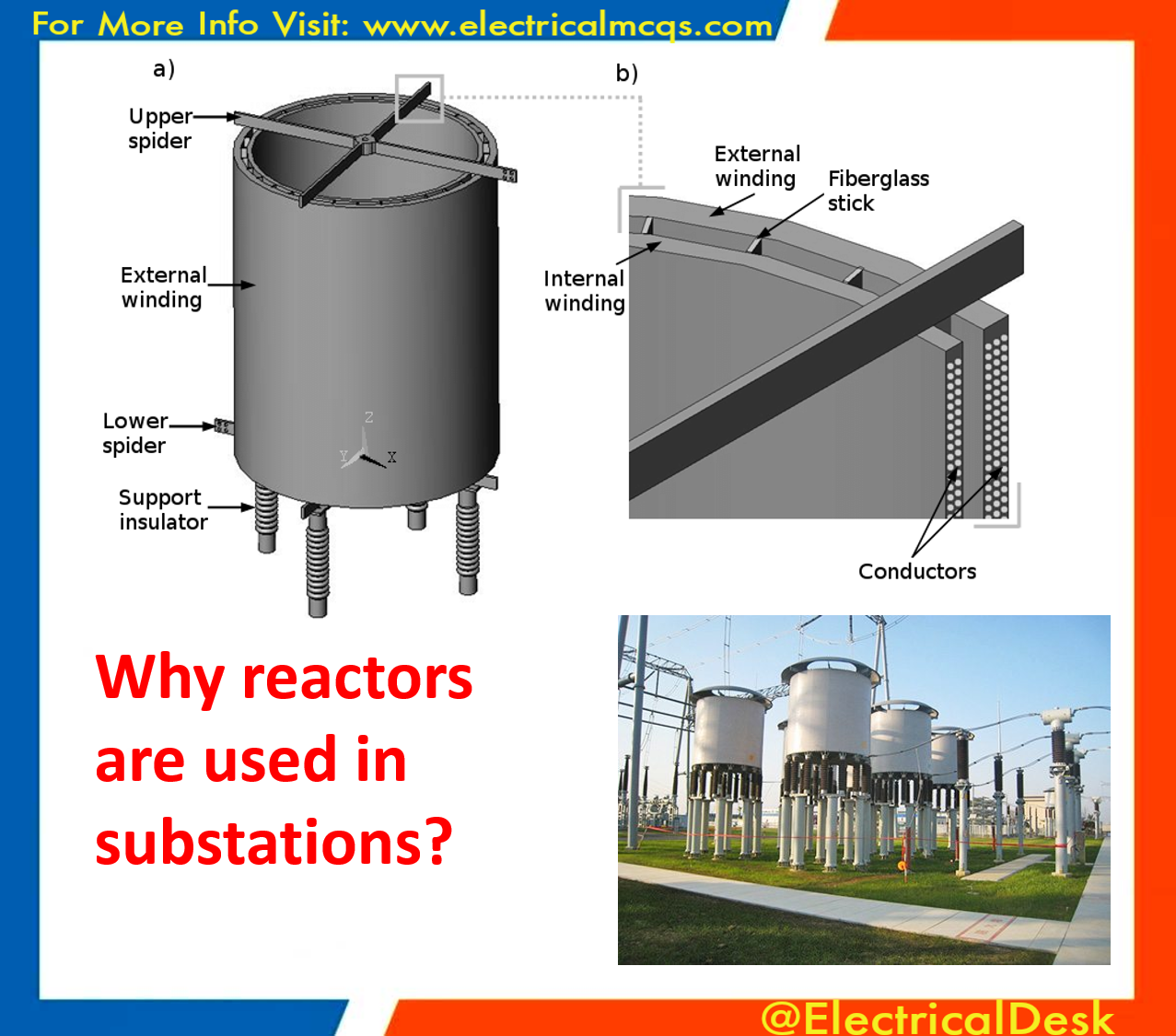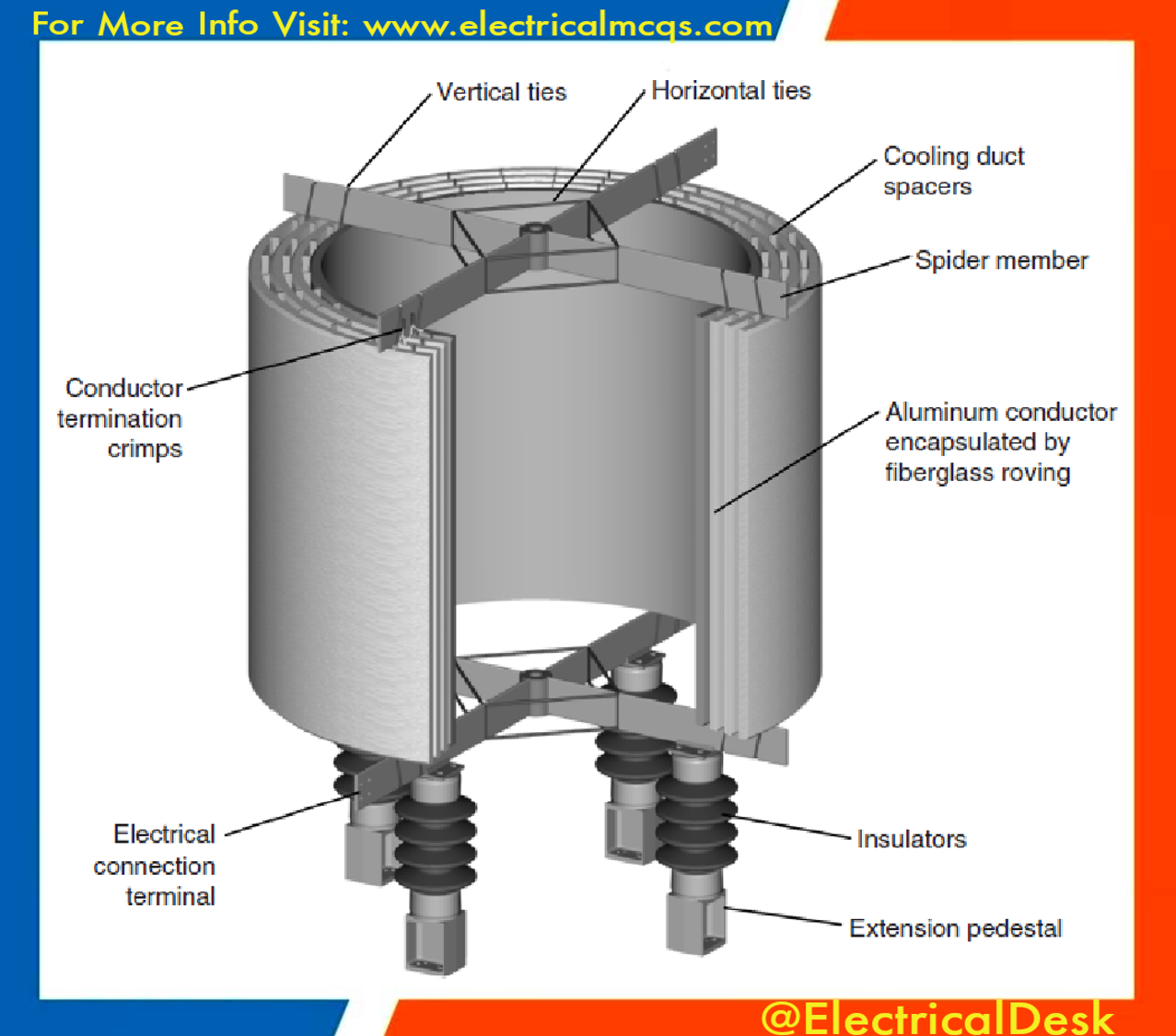A reactor is a coil that has a large number of turns and whose ohmic resistance value is much greater. Reactors are used to limit the short circuit currents which can cause damage to the equipment of the power system. The additional reactance added in series with the system for protection, are called reactors.
Reactors are also used to protect the circuit breakers of different ratings. They are used to limit the short circuit currents according to the capacity of circuit breakers.
In order to limit the short circuit current to that value which circuit breaker can handle reactors are used. They are also used for improving the power factor.
The reactor is nothing but having a wound coil inside it having a high impedance. Suppose there is a short circuit in the transmission line it limits the short circuit current to a safer value which prevents the connected equipment i.e breaker or transformer.
In an electric power transmission grid system, switchyard reactors are installed at substations to help stabilize the power system. For transmission lines, the space between the overhead line and ground forms a capacitor parallel to the transmission line, which causes an increase in voltage as the distance increases.
In short, a substation reactor is essentially a coil that has several turns and fairly high resistance values. Electrical reactors are typically used on a transmission line when it’s necessary to limit currents that could damage a power transformer or other power system. This type of current-limiting reactor often relies on inductive reactance. The additional inductance and reactance are then added to the series which is key to the function of an electrical reactor or series reactor.
Typically, a reactor is applied in two key ways when it’s used in a substation. First, there are common scenarios where a given substation is more lightly loaded. If the substation is lightly loaded but is still at the end of several high-voltage lines, you may wind up with unnecessarily high voltage which can negatively impact the current flow. By using a shunt reactor, you can reappropriate the produced power and then bring down the voltage levels so they remain at tolerable levels which won’t disturb the overall system functionality.
In the second scenario, some substations rely on solid or stiff systems where generated fault currents can overrun circuit breakers and capacitor banks. In this case, a series reactor provides the most reliable as it can offer additional inductive reactance that decreases the fault current to the point that the substation’s circuit breakers can effectively handle it. Without this reactor present, the circuit breakers and other cables could be damaged.
Electrical reactors are also commonly used to lessen circuit flows and restrict them so the flows don’t overshoot the capacity of your circuit breakers. This is useful for saving both time and money as you don’t need to continually replace or repair circuit breakers and cables as long as you have the appropriate line reactor and an electrical switch. However, without a line reactor, you’re liable to spend much more money.
Electrical Interesting Questions | All Posts
- Will a D.C Shunt Motor operate on an A.C Supply?
- What is Load Shedding Transformer? Applications of Load Shedding Transformers
- What is XLPE Cables? Applications of XLPE cables
- What is Silicon Rubber Insulator? Where Silicon Rubber Insulator is used?
- What is a voltage detecting insulator? Where voltage detecting insulators are used?
- What Is Vacuum Interrupter? How Vacuum Interrupters Work in Circuit Breaker?
- What is Arc Chutes or Arc Divider or Arc Splitters In Circuit Breaker?
- What is a High Voltage Detector? Where High Voltage Detector is Used?
- What is Wave Trap? Where it is Used?
- why generation is 11kv in the power stations?
- Why Earth Pin is Thicker and Longer in a 3-Pin Plug?
- Why are Bundle Conductors used in Transmission Lines?
- What are the Colored Aerial Marker Balls on Power Lines For?
- Why is Electric Power Transmission is Multiple of 11 i.e 11kV, 22kV, 66kV, etc?
- Why Tertiary Winding is used in transformers?
- Why PT and CT Terminals are Star Connected?
- What is Oil Surge Relay in Transformer?
- What is Stockbridge Vibration Damper In Transmission Line?
- Why Stones are used in Sub-Station Switchyard?
- Why Arc Horn is used in High Voltage Transmission Line?
- Why tester does not work on DC?


